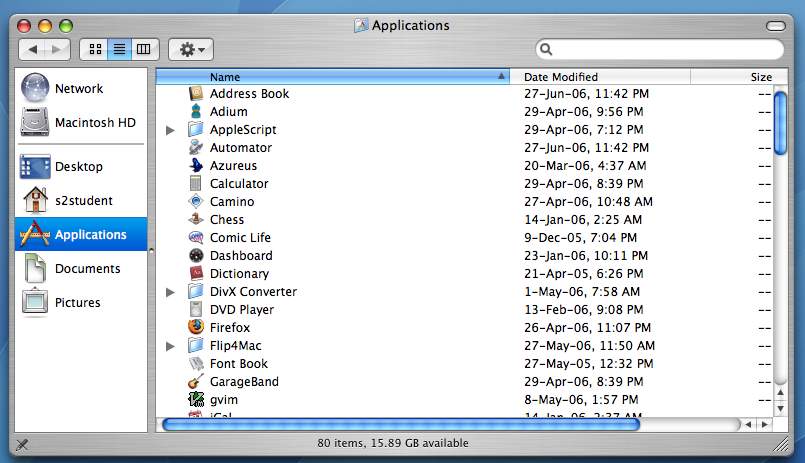
The next thing to learn about in Mac OS X is the Finder. This is the little thing that you see in the top menu bar when nothing else is open. It is also on the far left of the dock bar. If you click on it, this will bring up a new window. This window allows you explore your files on the Mac OS X system. A screen shot of the finder is shown below. The left-hand side contains places you might want to commonly visit. The default spot is your home directory. This directory is your student.cs directory and is equivalent to the U: drive on a Windows computer. All of your CS files will be stored here. The right-hand side displays the files in that directory. You can double-click on them just as you would in Windows to view their contents.

Feel free to explore the other icons on the left. One worth pointing out is the Applications one. The dock bar at the bottom of the screen contains only the most used applications. Mac OS X on the other hand has hundreds of other applications. You would access them from here. As you can see, there are many other applications such as a calculator, address book, and many many more. To open one, simply double click on it.

The Finder is used to manage files by organizing them into folders; as the name suggests, it can also be used to find files if you have forgotten where you put them. It is similar to, but not the same as, "My Computer" in Windows.
Drag files to the Trash when you wish to delete them. The Trash is found on the Dock (depicted on the far right in Figure 1); it is like the "Recycling Bin" in Windows. Simply putting a file in the Trash does not automatically delete it. You must choose the menu item Empty Trash from the Finder menu to permanently delete files from the Trash.